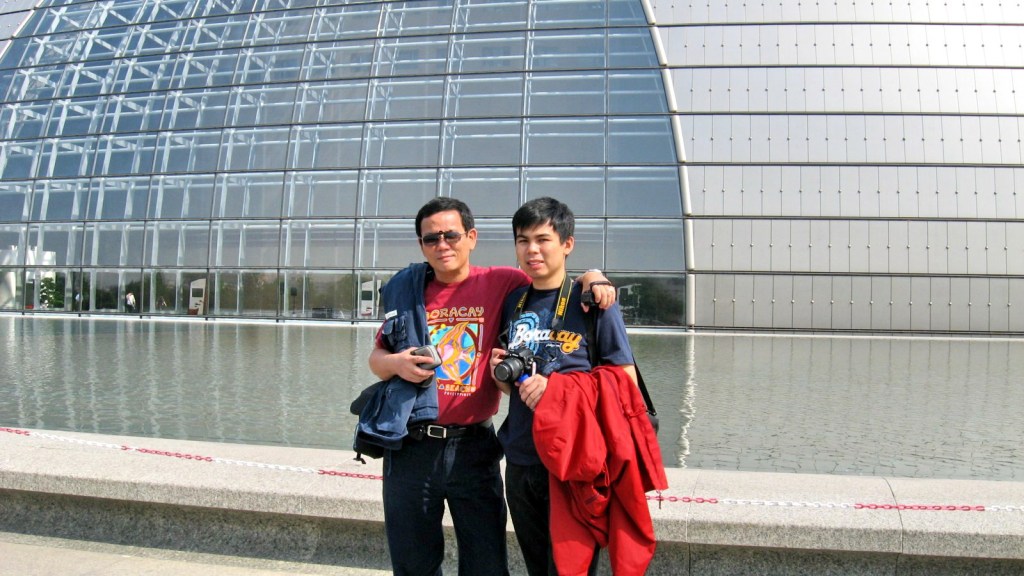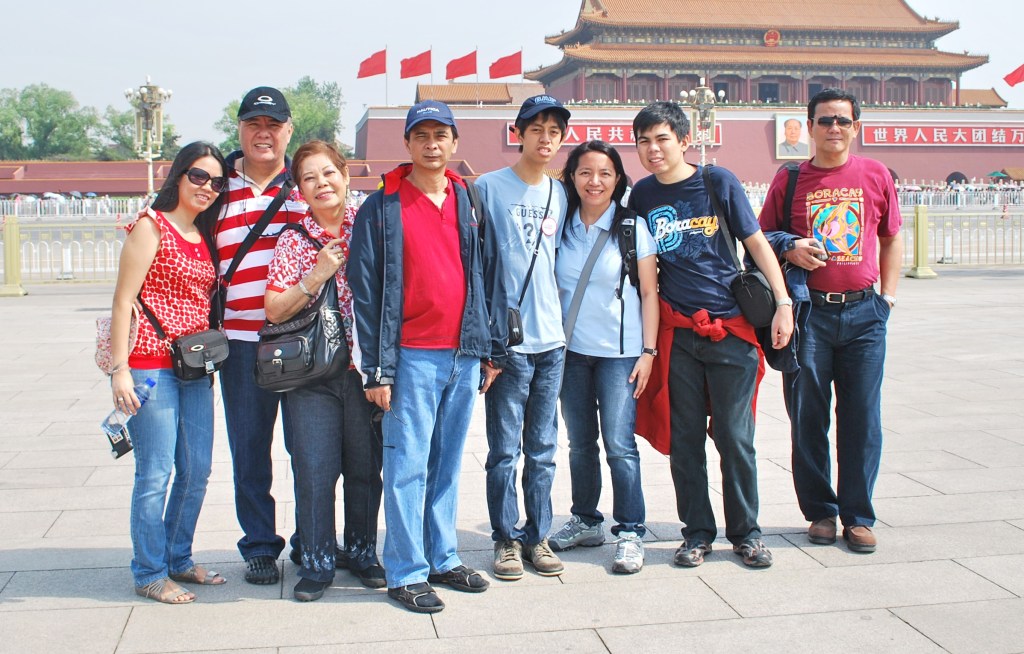The next day, after breakfast at the hotel’s Amazing Thailand Coffee Shop, we now proceeded with our walking tour of nearby Tian’anmen Square and the Forbidden City. Along the way, we made short photo ops stops at the futuristic 12,000 sq. m. National Centre for the Performing Arts, a recognizable opera house colloquially described as “The Egg.” It’s iconic, titanium-accented and 46 m. high ellipsoid glass dome is completely surrounded by a man-made lake, said to look like an egg floating on water.
Started in December 2001, it was finished on July 2007 and its inaugural concert was held in December that same year. The glass dome measures 212 m. in the east-west direction and 144 m. in the north-south direction. Its main entrance is at the north side and visitors can walk through a hallway that goes underneath the lake. The titanium shell is broken by a glass curtain in the north-south direction that gradually widens from top to bottom.
French architect Paul Andreau designed the center with large open space, water and trees. It was specially designed to complement the red walls of ancient buildings and the nearby Great Hall of the People in order to melt into the surroundings as opposed to standing out against them. The center seats 5,452 people; 2,416 at the Opera Hall (used for operas, ballet, and dances), 2,017 at the Music Hall and 1,040 at the Theater Hall (used for plays and the Beijing Opera).
National Centre for the Performing Arts: No.2 West Chang’an Ave.,Xicheng District, Beijing, People’s Republic of China




















